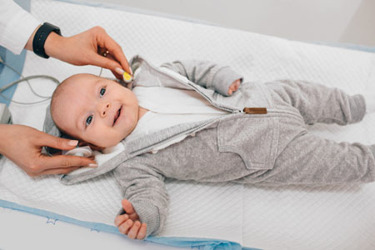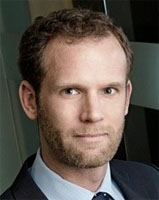Ocular + Auditory Cell Therapies: Lineage Cell Therapeutics 2.0

By Matthew Pillar, Editor, Bioprocess Online

In December 2021, Lineage Cell Therapeutics announced it had entered into an exclusive worldwide collaboration and license agreement with Genentech, a member of the Roche Group, for the development and commercialization of a human retinal pigment epithelium (RPE) cell therapy derived from an established pluripotent cell line. That candidate, known as OpRegen, is being developed for the treatment of ocular disorders, including advanced dry age-related macular degeneration (dry AMD). The agreement held a value of up to $670 million, in addition to double digit royalties.

These results were enough to earn Lineage a $50 million upfront payment from Genentech in January 2022. Now, the company is focused on the development of its other cell therapy programs, including a recently launched auditory initiative.
Building On Platform Momentum
Before I caught up with Culley again this Spring, I was aware of two other candidates in its pipeline—one phase II cell therapy asset in spinal cord injury and a phase 1 immuno oncology treatment for non-small cell lung cancer. But more recently, the company announced a brand-new cell therapy program in auditory neuropathy spectrum disorder (ANSD). Is there anything cell therapies can’t address?
ANSD is somewhat of an umbrella term for any number of conditions marked by damage to the auditory nerve, the pathway between the cochlea of the inner ear and the brain. It can be congenital, or it can result from birth complications including sever jaundice, low oxygen levels, neurological conditions, head injury, or even reaction to certain medications. Its symptoms vary from mild to severe hearing loss, and it’s estimated to impact between 1 and 3 children per 10,000 births.
Asked to share the origin story behind Lineage’s commitment to developing a therapy to address the condition, Culley offers a 2-part response. “About a year ago, my neighbor approached me and said, hey Brian, I have tinnitus. Is there anything in cell therapy for hearing loss?” recalls Culley. I looked into it, and found the answer to be mostly no. That’s parallel to dry AMD and our pursuit of OpRegen,” he says. “There's nothing approved by the FDA to address it pharmacologically.”
The unmet need and the parallels to the company’s dry AMD experience were enough to cause Culley to give the indication serious thought. But it was his insistence that Lineage’s technology is its lead asset—as opposed to the lead candidate it has in OpRegen—that convinced him to pursue a solution for ANSD. In a gross oversimplification of his mindset, he quipped “we’ve got a platform, what should we build from it next?”
“When we began to realize that the project with Roche was yielding some success, I looked downstream and asked myself, how am I going to keep people excited? Then I thought, our lead asset is the technology that gives us the ability to make different cell types, explains Culley. “OpRegen was the leading example of that. So, it was important to me to demonstrate our ability to create success in other areas.”
And why not? The investment risk taken on to pursue a new indication was nominal. Lineage owns the technology. It doesn’t have any pass-through obligations, didn’t have to buy an asset from someone else or license the technology from another entity. “We've already invested in a lot of the manufacturing infrastructure that allows us to do this. It’s a recipe, right? We're just making calzones now, instead of pizzas,” Culley explains. Second gross oversimplification aside, Lineage evaluated several dozen different cell types with therapeutic potential, matrixed them against attributes including addressable market, ease of manufacturing, dosage, and more subtle attributes to land on a rudimentary probability of success. “This was a long-term planning exercise that we invested a lot of attention to. It spun out a number of really intriguing opportunities. One of the highest-ranking of them was the manufacture of auditory neurons for hearing loss, because it does share a lot of parallels with the OpRegen program.”
A Process Development Fast Lane
Culley sees an efficient development path for the ANSD candidate, given the related expertise at Lineage. It has the analytical equipment, the GMP facility, and even the clinical facility infrastructures in place. It has a sizeable manufacturing team working on RPE, oligodendrocytes, and dendritic cells. These assets give it an inherent efficiency advantage.
“Let's say it takes 60 days to make a certain cell type,” Culley explains. “There’s a lot of waiting associated with that. You do some testing when you’re waiting for those cells to multiply or differentiate, but it’s mainly waiting.” That’s why running one process to develop one cell type is not particularly efficient, he says. “But when you start a second, third, and fourth cell type, largely run by that same group of individuals and maybe a few more hands, there's so much more economy. We already own the paddle wheels and the flow cytometer. We have the methods we’re working in neuronal lineages, and many of those steps are identical to our OpRegen program.”
“Similar to OpRegen, we're talking about a relatively small number of cells that are delivered to a very specific location,” he says. Auditory neurons are on the neuroectodermal pathway, which Lineage knows well from its experience manufacturing retinal pigment epithelium cells. “In the context of development, auditory neurons are simply a different exit on the same highway,” he says. “We don't have to go through some of the really laborious, expensive and time-consuming steps that other companies do with small molecules, for example. All these years of, of evolution have already determined that auditory neurons play an important role, so we know what we need to make. We need to make an auditory neuron. We don't have to screen millions of molecules to do that. We don't have to do structure, activity, relationship, and optimize binding kinetics. We just need to manufacture that cell type consistently and at scale, and our ability to go so quickly, in just a matter of months, from concept to generating new intellectual property and manufacturing these cells is really illustrative of the power of the platform.”
Further, Culley sees advantages in his company’s self-sufficient approach to development and manufacturing. “I don't think most cell therapy companies have comparable infrastructure. Most have alliances with contract manufacturing groups, and I just don't think it's equivalent. I don't think it can be as productive to throw this stuff over the wall and ask some contract organization to give you nice, clean cells on the other side. There's too much creative art associated with this particular part of manufacturing.”
That’s the kind of confidence Culley has in his team and its command—and ownership—of the technology. “This is something we know how to do,” he says. “Skeptics will say, nothing has worked in hearing loss. Well, nothing before OpRegen worked in dry AMD either.”
Learn more about Lineage Cell Therapeutics at lineagecell.com.
